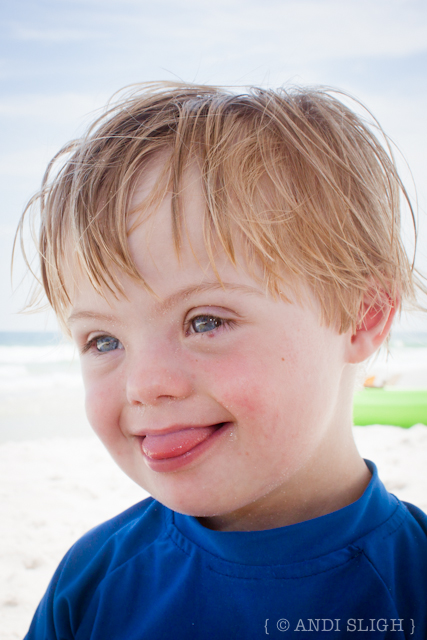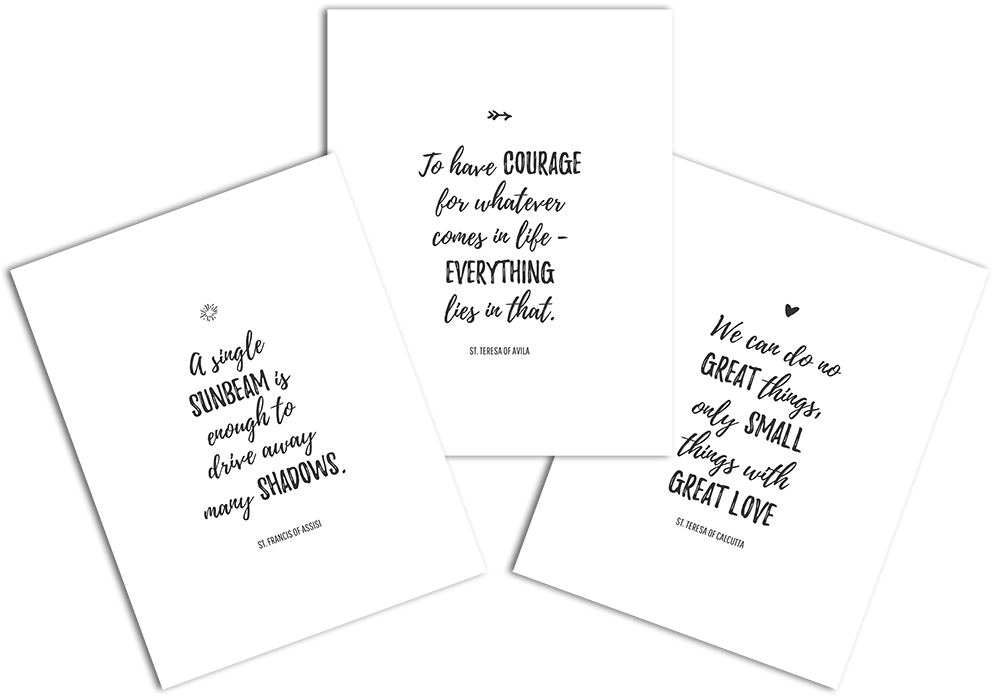
My Google Reader exploded this week with stories about Valentina Guerrero, a 10-month old girl with Down syndrome who was selected as the centerpiece of an ad campaign for Dolores Cortés Kids USA swimwear. I initially skimmed over the many stories, flagging one of them for later in case I wanted to use it for this weekend’s Sun-Beams.
My first instinct was: Good for them – but I wish it was commonplace enough that it wasn’t a big deal.
Valentina isn’t the first child with Down syndrome to be featured in a for-profit company’s ad campaign. Target and Nordstrom both quietly used Ryan Langston in their ads last year, and the Down syndrome community stood up and cheered. Dolores Cortés, however, has been both lauded and panned. Why?
S.E. Smith at XOJane has (thus far) been among the most outspoken critics. Her complaint? That Cortés is using Valentina to build her own progressive social cred and draw attention to her business in that way (apparently Smith hasn’t noticed that not everyone is keen on kids with Down syndrome). She presumes that Cortés’s motives are purely mercenary, though Cortés has committed 10% of profits from the line to the Down Syndrome Association of Miami.
Some have even equated Valentina’s inclusion in the catalog as exploitation.
While people with disabilities such as Down syndrome do appear in print ads occasionally, it’s not commonplace, and make no mistake – companies like Target and Nordstrom were bucking social norms when they selected Ryan Langston as a model.
Is it possible that Cortés included Valentina purely as a marketing gimmick? Of course. But all kids in catalogs are there for a purpose – to help sell the items found within it. It’s not just sex that sells – cute kids and puppies work, too, and as you can see from the photo above, Valentina is CA-YUTE.
And I don’t think anyone can win in S.E. Smith’s world.
The irony of Smith’s piece is that toward the end, she is critical of the modeling industry for not including models with more visible imperfections or disabilities and she criticizes them further for primarily selecting disabled models who are also “white or easily read as such” (Valentina is Latina, not Caucasian). Smith presents herself as a champion for minorities, including the disabled, but her words and tone indicate that she thinks Valentina doesn’t look disabled (or non-white) enough.
Something else that bugged me about White’s piece was the way she revealed her own assimilation into our culture that doesn’t respect people with Down syndrome. Right after blasting the industry for providing limited modeling opportunities for people with disabilities, she added, “once Valentina is no longer sufficiently cute, she’ll be out of work.”
Notice that she didn’t say, “if Valentina reaches a point when she is no longer sufficiently cute…” She says WHEN.
Smith was undoubtedly trying to draw attention to the fact that the modeling industry goes for one particular “look” in advertising. But not all child models – even able-bodied ones – grow up to become adult or teen models, and it has little or nothing to do with disability, or lack thereof. She could have made the exact same statement about ANY child model and it would have been equally as true (or false).
Smith’s comment stuck in my craw because it’s very similar to the sentiment I’ve seen expressed over and over again about children with Down syndrome: that it doesn’t matter if he’s cute as a kid, because when he grows up everything will change. He won’t be able to do anything for himself. He’ll be a burden to society.
Companies champion causes (or speak out against them) all the time, and there’s no doubt that they do it as part of their marketing strategy.
That’s business, and we all know it and accept it. So why the rush to judgement of Dolores Cortés? Those people screaming “exploitation” of Valentina – is it because they perceive her as less of a person? Do they assume that because she’ll likely have some cognitive delays that she should be hands off? Or is something darker at work, like a desire to continue to hide people with Down syndrome away? It’s not unusual for a fashion company to issue a press release and make a big deal about who their new feature model is, which is what DC Kids has done, and Down syndrome isn’t a condition that no one would have noticed.
Some commenters on Nathan’s IDSC for Life photo also yelled “Exploitation!” and while I’m not a huge fan of Kelle Hampton, people like to scream “Exploitation!” about her daughter, Ella, as well. Hogwash. Dolores Cortés, Kelle Hampton, the IDSC for Life, and every other blogger, business, or organization who places the faces of people with Down syndrome in front of the public is doing a good thing. People are never comfortable with the unfamiliar. By making this special population familiar, acceptance is certain to follow.
If we refuse to celebrate good things people do because we can’t confirm their motives were 100% altruistic, we’re going to have a lot less to celebrate in this world.
Kudos, Dolores! And by the way, Nathan is available…


I think Valentina is ADORABLE. In the photo you use, her face is just lit up with joy. It’s a great photo for an ad regardless of the fact that she has Down syndrome. You’re drawn to her photo, and that’s what an ad wants to do.
Is there additional exploitation? Maybe. But it does what it’s supposed to – it draws attention to the product and it gets people talking. And Valentina clearly isn’t being harmed by it. So it seems like a good thing to me.
Also, Nate looks so grownup in that photo (tongue and all!). He looks like a little boy and not a baby anymore. But I still want to hug him to pieces.
It’s hard to scream “exploitation” when there are still people who will see that sweet girl and reference the “r” word. To exploit someone is to use them for some sort of gain. I don’t think that she will make a significant extra amount of money more than she would if she has used any other child. And as for her getting more recognition than Target and Nordstrom, those two are not high fashion. There are kids with disabilities used all the time in the toys r us ad but it never gets mentioned. I think she’s getting more attention because she is a famous designer…not just a retail store.
Simply EXCELLENT post, Andi!
I love this post. Nothing else I could say would sound eloquent enough.
Me. Too.
If it’s exploitation to have a DS kid as a model then it’s exploitation to have any kid as a model. I firmly believe that a big way to make something “socially acceptable” is to show it in the general media as often as possible until it becomes so common that you don’t even pay attention anymore. Burn victims are shocking at first, but I have a dear friend who is a burn victim that I’ve known since I was 10. You might see him and be horrified, but he’s just Dave to me. The more Down Syndrome, special needs, disabilities, disfigurements are shown and treated as normal, the more people will accept them as normal. So I think it’s great this adorable little girl is out there putting a [cute] face on Down Syndrome.
This is what I saw when I saw the picture of Valentina – cute kid, cute swimsuit, oh yeah, DS. So what if she has downs? She’s cute, she’s obviously happy and she made that swimsuit look great. Isn’t that what she was supposed to do? I don’t see exploitation, but that’s just me.
I love your post and 100% agree. We celebrate our first African American President, the first female Supreme Court Justice, the first African American supermodel (and so forth), so why not celebrate the first person with DS to be the main model of a campaign by a big fashion designer. I for one will be ordering my catalog.